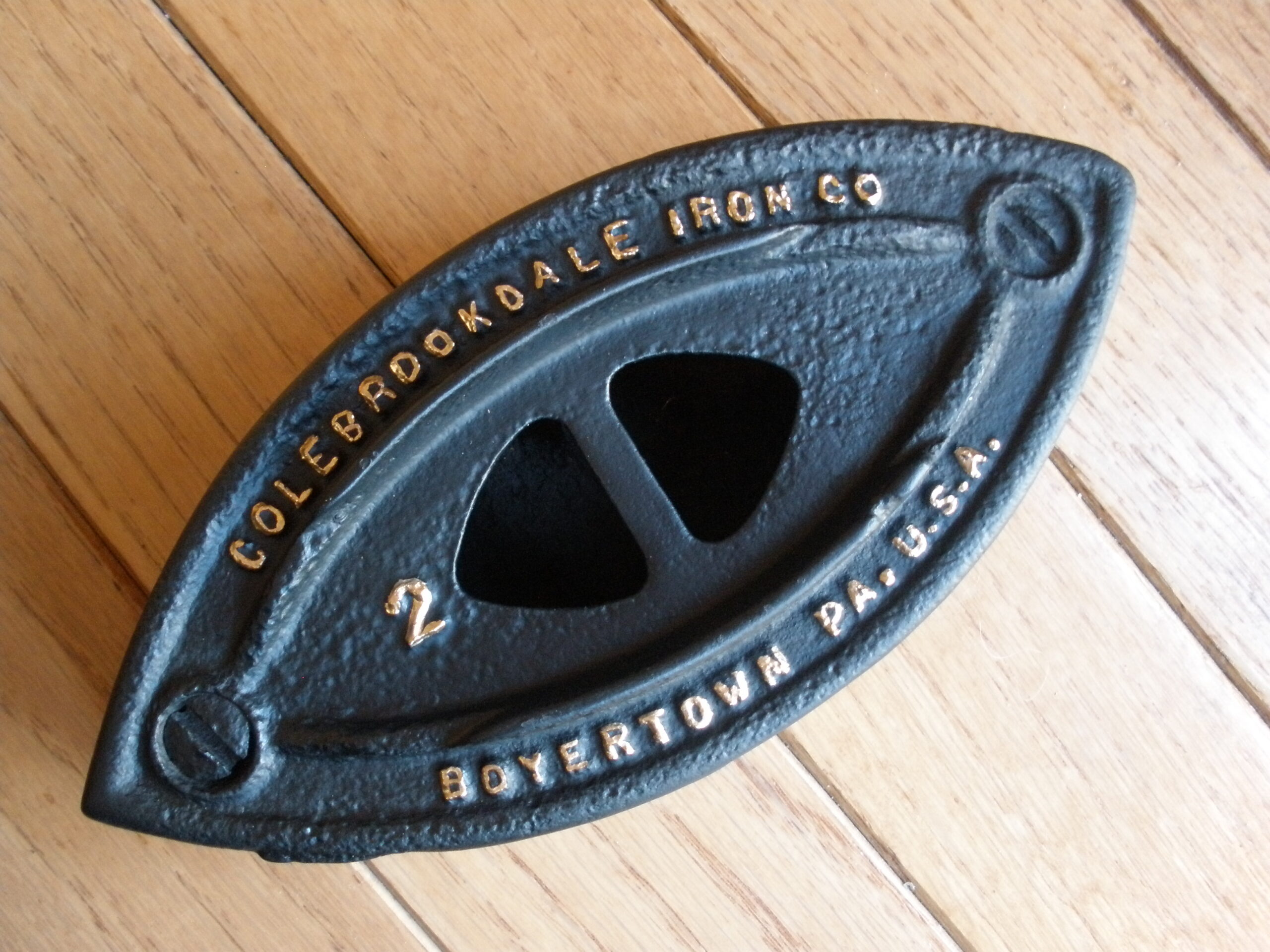For sale is an early 1900s cast iron SAD IRON made by the Colebrookdale Iron Company, Boyertown, PA. The top of the iron is embossed: “Colebrookdale Iron Co – Boyertown PA U.S.A.” This iron model No 2 measures about 6 1/2″ long and 1 1/2″ tall. This iron is the perfect size for a paper weight, book end or as display item for your kitchen.
Before the American Revolution, the Pottstown, PA area had a thriving iron industry. Thomas Rutter built a bloomery forge in 1716 to make iron. In 1725, Rutter brought in new investors who then leased the furnace to Thomas Potts, who became the furnace’s resident manager. By 1752, the Colebrookdale Furnace had consumed the nearby forest and was drawing lower-quality iron ore from the deposit that supplied it. The furnace was blown out for the last time just before the American Revolution. In 1835, the Colebrookdale Iron Company was founded. Joseph Bailey, the founder of the Colebrookdale Iron Company, was also the primary proponent of the Colebrookdale Railroad.
Sad irons, also called flat irons or smoothing irons, are shaped pieces of metal that are flat and polished on one side and have a handle attached to the other, created for the purpose of de-wrinkling fabric. “Sad” is an old English word for “solid,” and the term “sad iron” is often used to distinguish the largest and heaviest of flat irons, usually 5 to 9 pounds. The forebears to modern electric irons, flat irons are often triangular or come to a point to make it easier to iron around buttons. The heft of a sad iron would help it hold heat, as well as to press the fabric flat. To protect fabric and surfaces from singeing, sad irons often came with metal trivets to rest on. Sad irons are often-beautiful, intricate, and collectible examples of metalwork.











